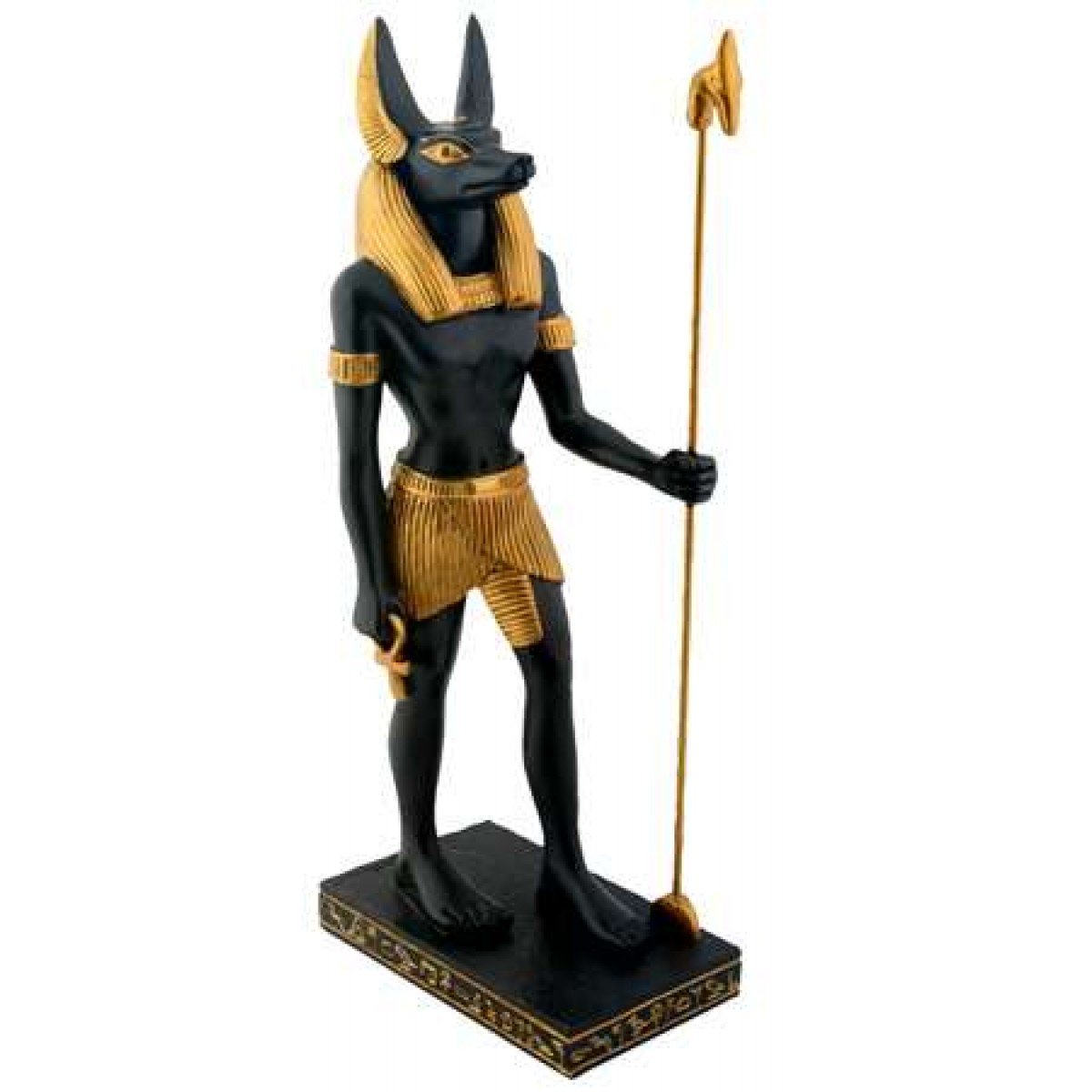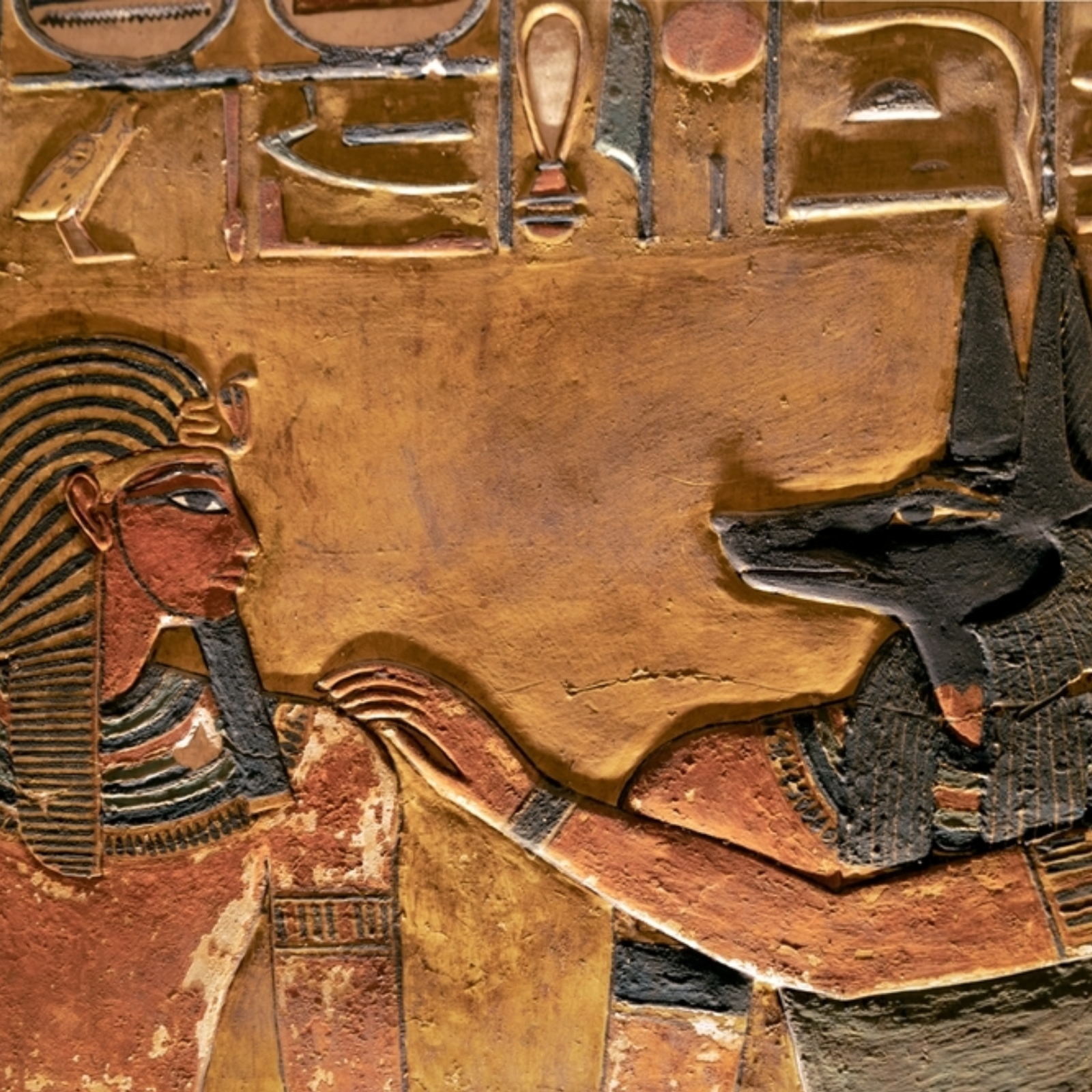Anubis, the ancient Egyptian dog god, has captivated people for centuries. With his jet-black head and mysterious aura, this powerful deity played a key role in ancient Egyptian beliefs about death, burial, and the afterlife.
Why did a dog-headed god become one of ancient Egypt’s most prominent symbols? You’re about to delve into the depths of myths, rituals, and symbolism spanning thousands of years.
Plan your dream trip today with Your Egypt Best Excursions, and let our expert team create a travel experience you’ll never forget.
Who is Anubis?
Anubis, known in ancient times as Inpu or Anpu, was an Egyptian god with the head of a dog, closely associated with the afterlife. As the god of embalming and protector of tombs, he was also responsible for guiding souls through the underworld. Over time, this ancient Egyptian deity became closely associated with mummification practices and the spiritual transition from death to resurrection.
Depictions of Anubis often depict him as a man with the head of a jackal or wild dog, and his color is usually black, not because actual jackals are black, but because the color symbolized regeneration and renewal in ancient Egyptian culture. So, while its appearance may seem strange, it is rich in meaning.
Jackal, dog, or something else?
It’s not entirely clear whether the animal is associated with the Egyptian dog god Anubis. Some say it resembles a jackal, others see it as a wild dog, and some argue it’s closer to the African golden wolf.
The truth is, the ancient Egyptians weren’t overly concerned with scientific accuracy—they focused more on symbolism. What is certain is that dogs and jackals were often seen near tombs, which likely inspired this spiritual association.
The head of the Egyptian dog god thus became a symbol not only for its canine features but also for its profound symbolic power—guardianship, loyalty, and protection in the face of death.
The Role of Anubis in the Afterlife
The ancient Egyptians had their own world-famous beliefs.
So the afterlife wasn’t a vague concept to the ancient Egyptians; it was detailed and organized, and they also had their judicial system. Anubis played a pivotal role in this system. According to mythology, he was responsible for the “Weighing of the Heart” ceremony. Here’s how it worked:
Once a person died, their soul embarked on a journey through the Duat, or underworld. At the culmination of this journey, Anubis—the dog-headed Egyptian god—would weigh the deceased’s heart against the feather of Maat, the goddess of truth.
If the heart was lighter or equal in weight, the person was granted eternal peace. If it were heavier, they would be devoured by Ammit, a terrifying hybrid monster. This system of reward and punishment was the most famous in ancient Egyptian beliefs.
This weighing, known as “psychic stupor,” was extremely important. Anubis carefully balanced the scales, demonstrating the importance of the dog-headed Egyptian god in determining the fate of the soul, without any deception or bias, but rather with integrity and precision.

The God of Mummification
Before Osiris assumed the rule of the underworld, Anubis ruled over the dead. He was deeply involved in the first recorded mummification in mythology: the mummification of Osiris himself.
After Set betrayed and killed him, his body was scattered throughout Egypt. Isis, Osiris’s wife, collected the pieces and handed them to Anubis, who skillfully reassembled and embalmed the body.
Anubis also became the first person to undertake mummification, making it a sacred and necessary ritual. This ancient Egyptian dog god was not merely a guide for souls; he was also the reason for the dead’s transition to the afterlife.
Soul Companion and Protector
Inside tombs and burial chambers, images and statues of Anubis were ubiquitous. As the Egyptian dog god, he was not merely a myth; he was believed to protect the dead from evil spirits and grave robbers.
One of his most famous images was found in Tutankhamun’s tomb, where an elegant statue of a black jackal was found guarding the canopic box containing the young king’s organs.
But the statue of the Egyptian dog-headed god was not only a vigilant guardian; he was also seen walking, holding the hand of the deceased, guiding them through the dangers of the underworld. This made Anubis not just a protector but a reassuring presence—a spiritual guide through the most uncertain phases of life.
The Origin of the Name “Anubis”
While we call him “Anubis” today, the name is actually derived from the Greeks. In ancient Egypt, he was known as “Inpu”, and later in Coptic as “Anub.” The original meaning remains controversial—some scholars believe it was an onomatopoeic name, mimicking the howling of a wild dog at night. Regardless of origin, Anubis, the Egyptian dog god, became one of the most popular and revered figures in ancient Egyptian culture.
Titles of the Egyptian Dog God
Like most ancient deities, he had many titles, reflecting his divine responsibilities. Here are some names that highlight his multifaceted role:
- Lord of the Sacred Land
- He Who Is on His Mount
- Lord of the Embalmers
- Guardian of the Cemetery
- He Who Is in the Place of Bandages
- Counter of Hearts
- Lord of the Divine Shrine
- Guardian of the Tomb
- He Who Eats His Father (a mysterious title, perhaps linked to symbolic protection)
- Each name added a new dimension to his mythology, making him more than just an Egyptian god—he was a complex, divine figure of immense power.
Dogs in Ancient Egyptian Culture
Why a dog, or rather, why a jackal-headed god? In ancient Egypt, dogs played a significant role due to their loyalty and nocturnal nature. They could sense danger, travel through the darkness, and protect the weak—qualities that made them ideal guides in the mysterious realm of the dead. For all these reasons, dogs were highly revered.
The idea of a dog god in Egyptian culture was not limited to Anubis. Dogs also appear in various tomb inscriptions, artifacts, and even mummified remains, demonstrating their veneration.
Is There a Difference Between Anubis and Osiris?
People often confuse Anubis with Osiris, but they played very different roles in mythology:
- Anubis: The god of embalming and guardian of the dead. He prepared the body and soul for the afterlife, performed sacred rituals, and protected tombs.
- Osiris: Ruler of the underworld and god of resurrection. After being brought back to life by Anubis, Osiris assumed the role of final judge in the afterlife.
In short, Anubis was the one who ensured your safe arrival to Osiris
Final Thoughts: Anubis in Popular Culture and Beyond
Even today, Anubis, the ancient Egyptian god of dogs, continues to inspire the imagination. From movies and video games to tattoos and art, his image remains influential. There’s something timeless about a god who guides souls, balances truths, and protects the tombs of the dead.
Whether you call him the ancient Egyptian dog god, the dog-headed Egyptian god, or just Anubis, this iconic deity still watches over the mysteries of life and death, just as he did thousands of years ago.


0 Comment